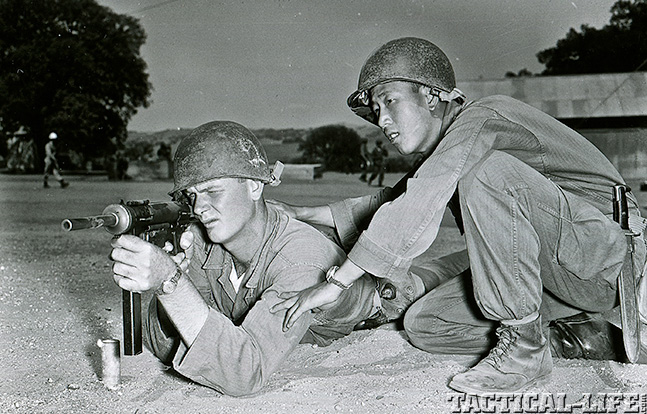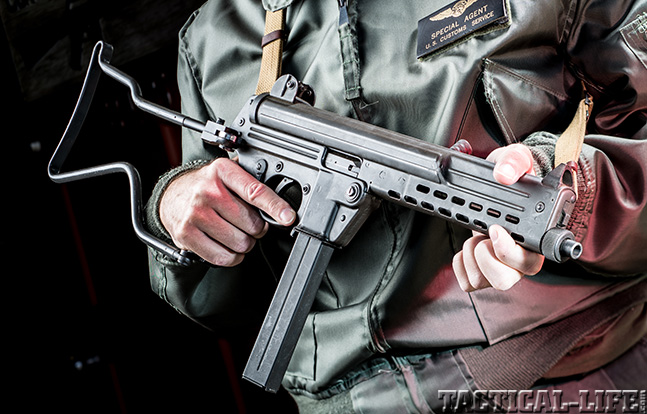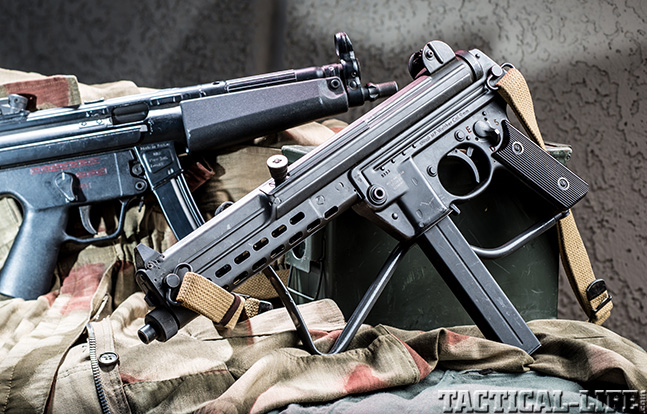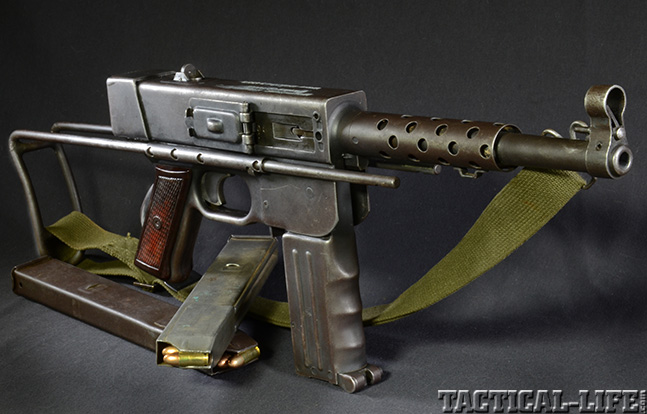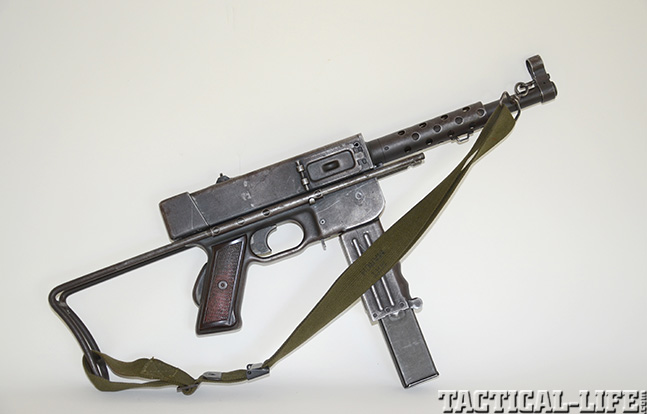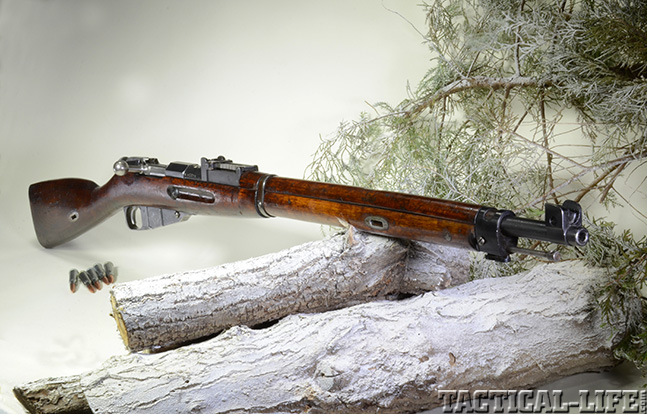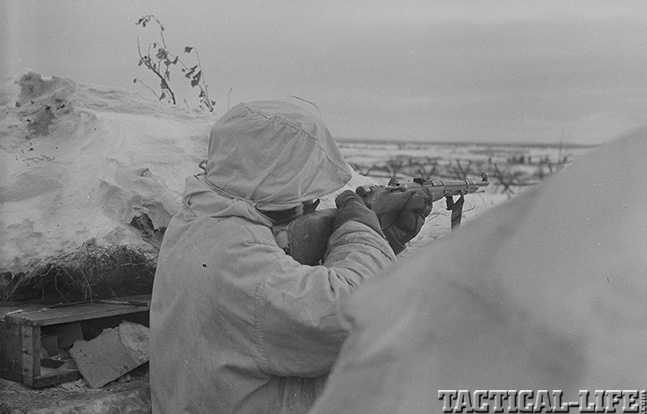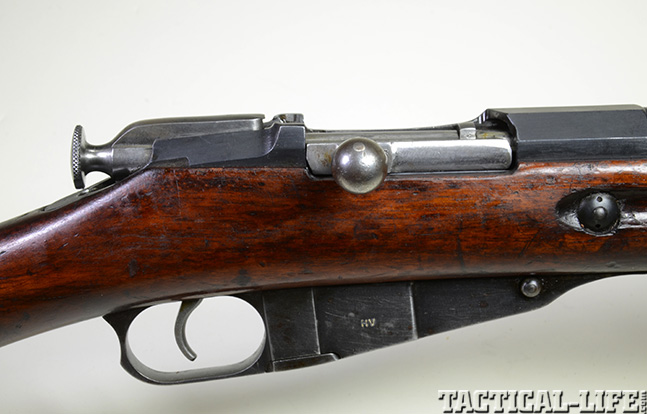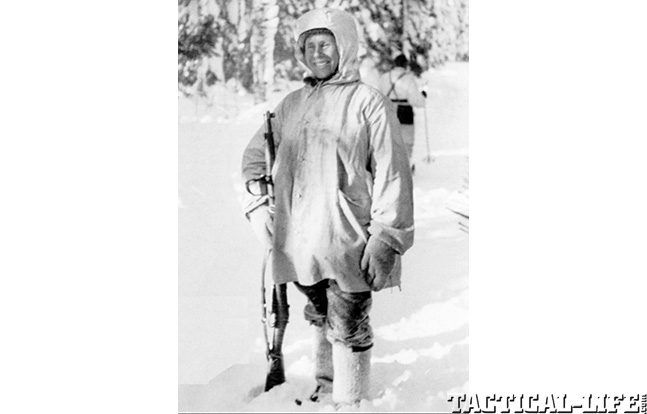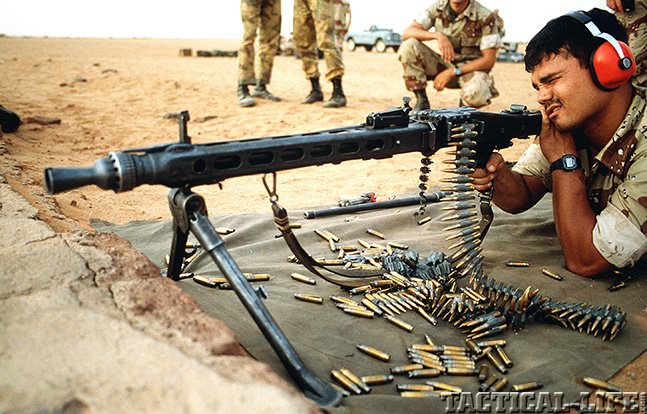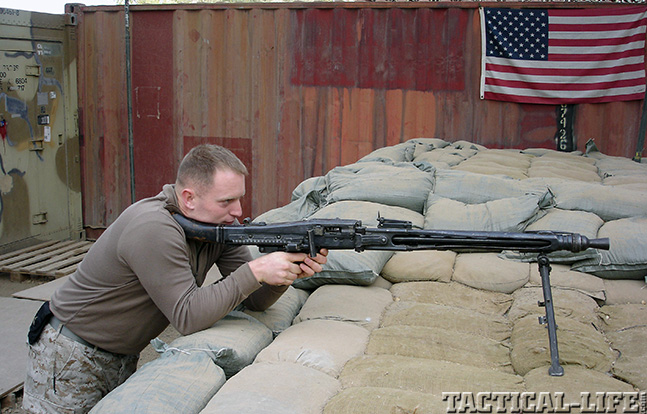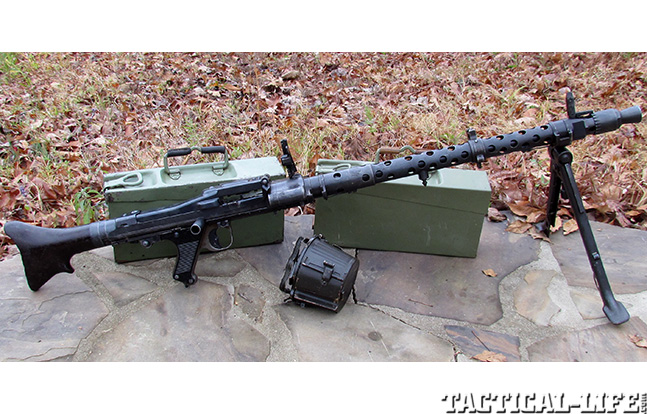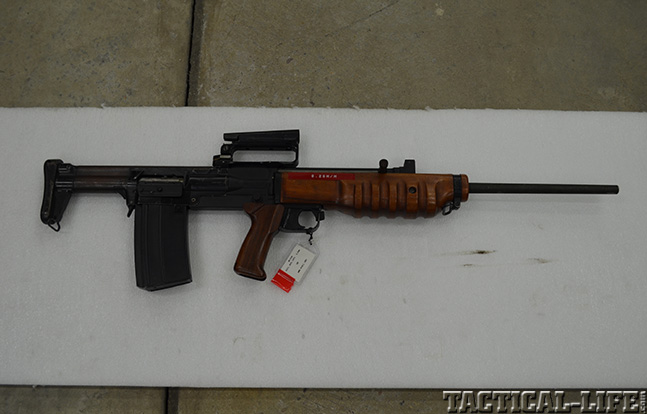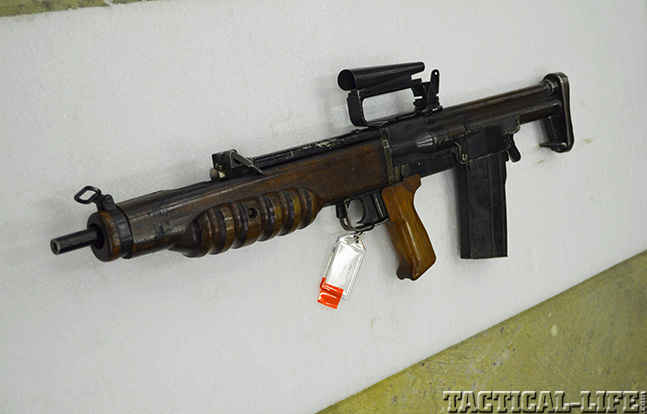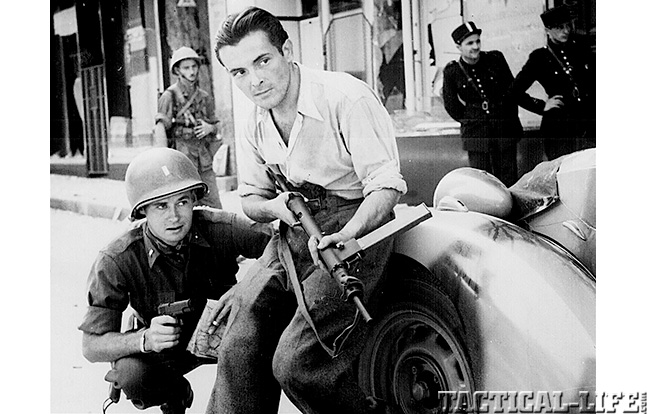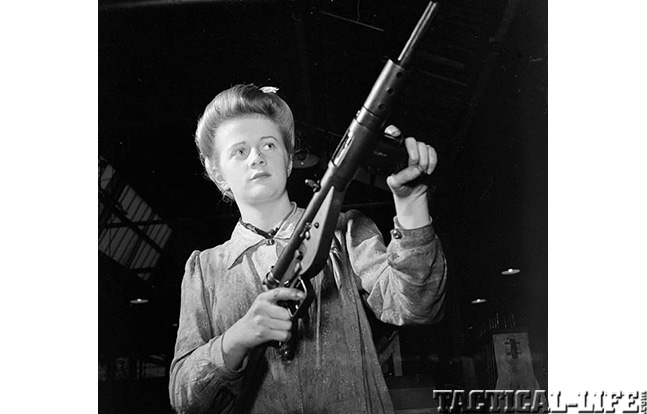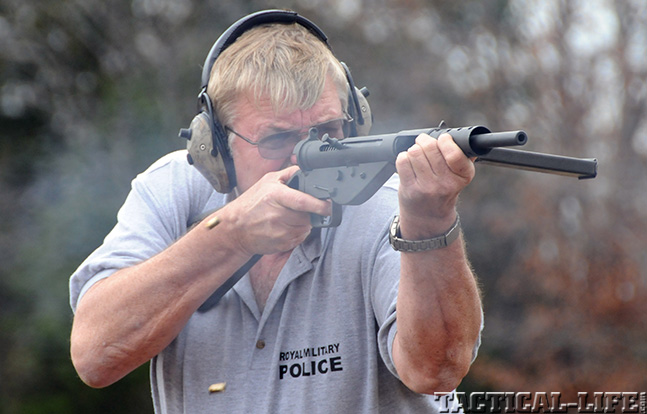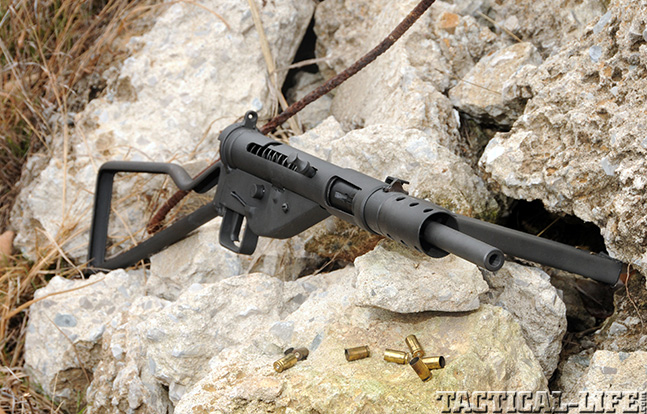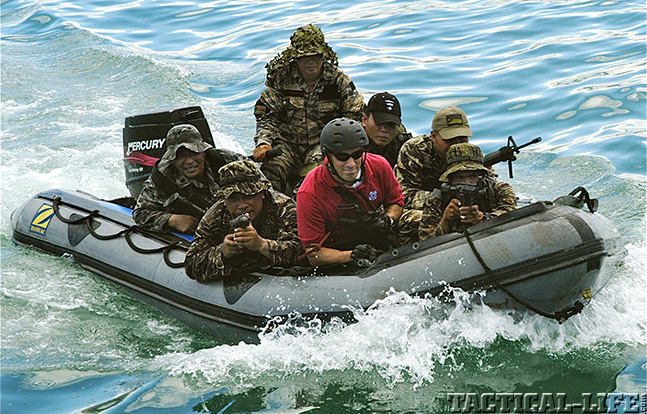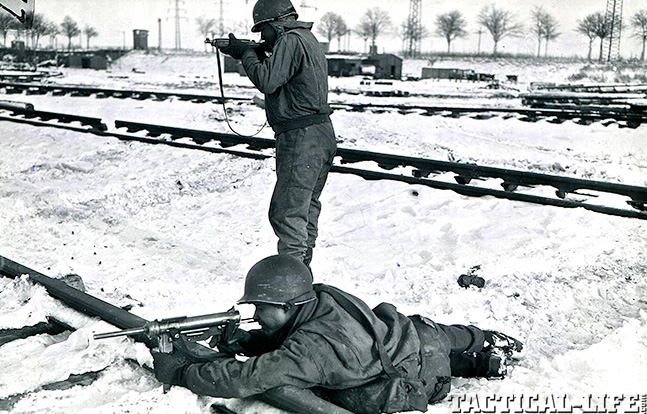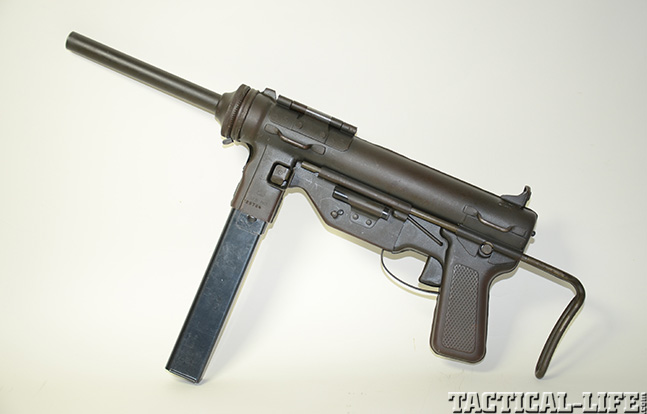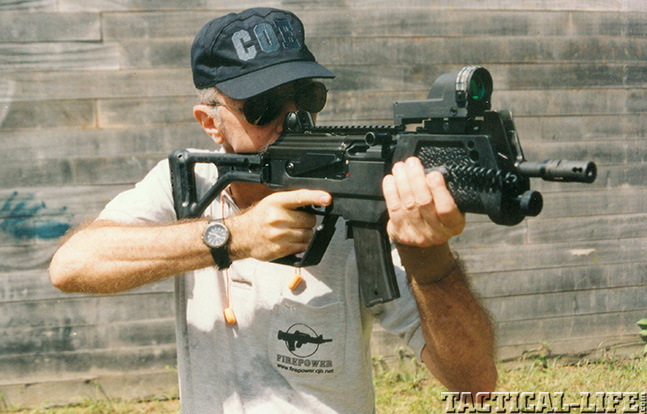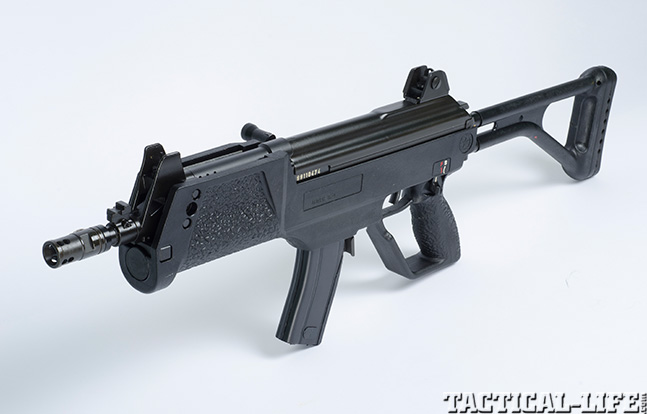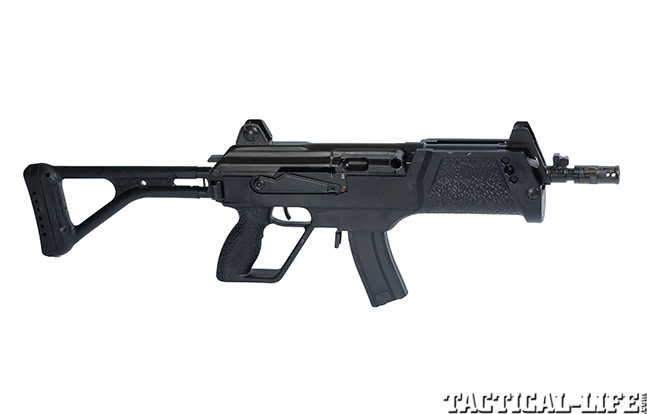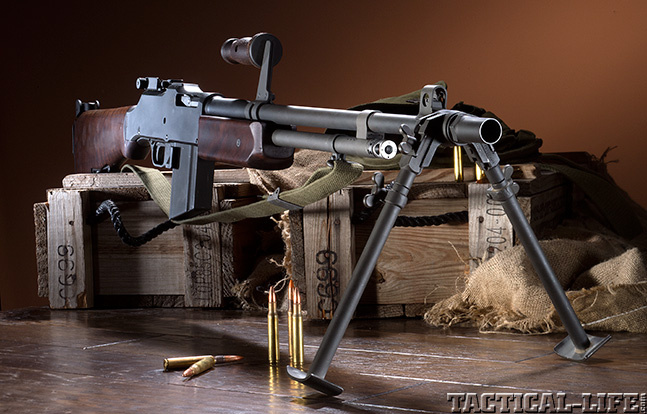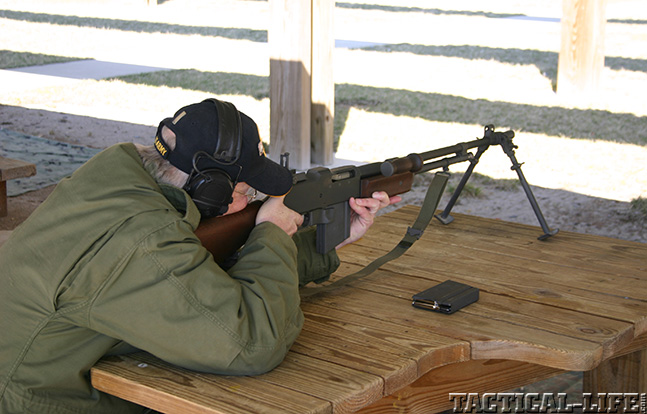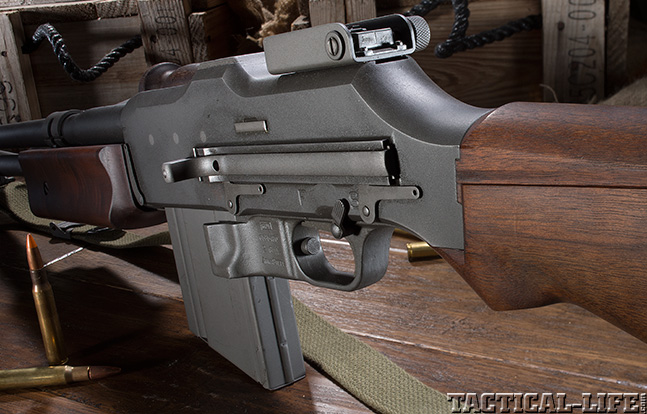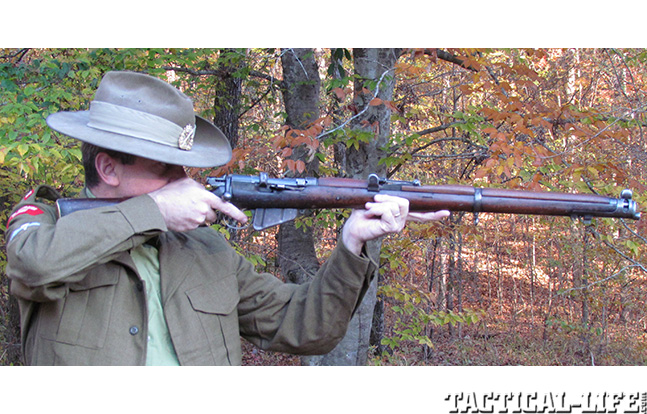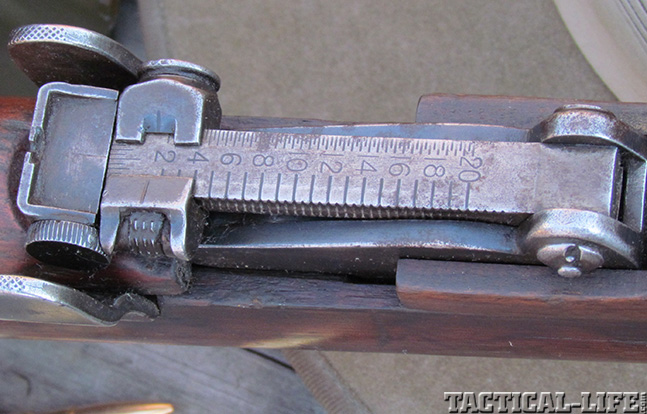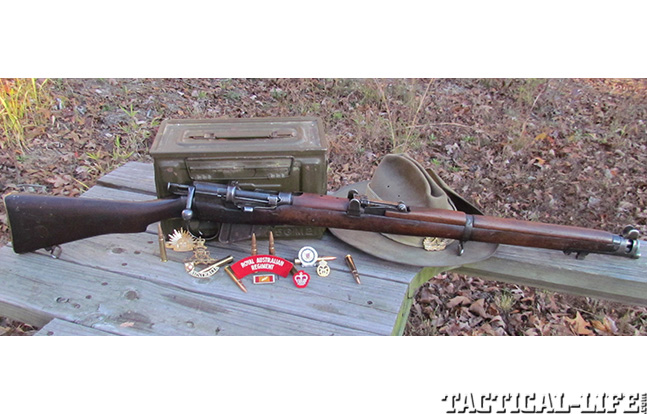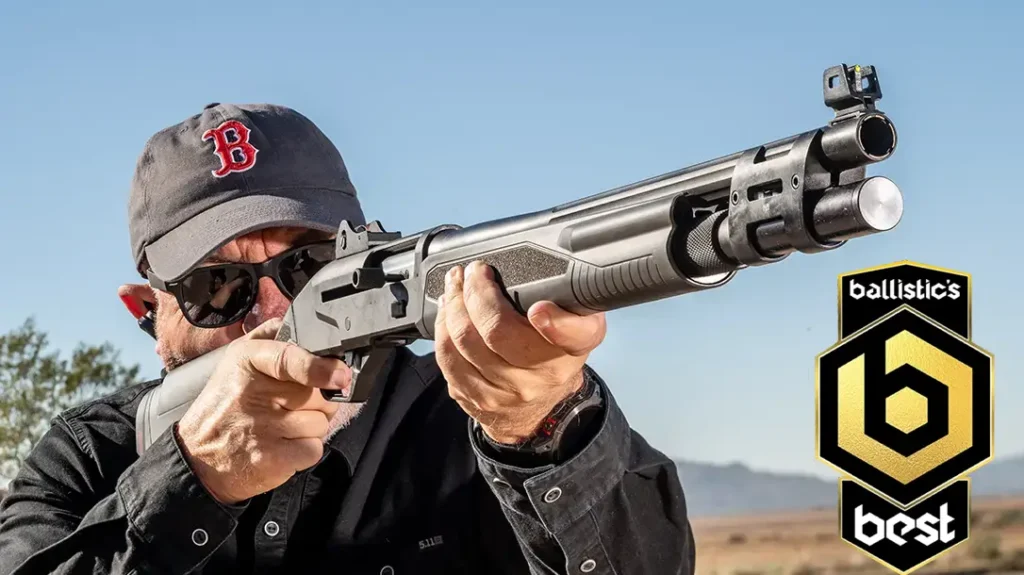These are your father’s, or your grandfather’s, guns — the combat rifles and machine guns they used, or battled against, in their brave efforts to win the great wars of the 20th century. We break down 10 of the most famous — landmark firearms that not only ruled the battlefields of their day, but also set the design template for the guns our warriors use today.
1) Walther Subguns
Advertisement — Continue Reading Below
When we think of the submachine guns that served during the period known as the Cold War, we generally think of the British Sterling, the Uzi, the Beretta Model 12, the M3/M3A1 Grease Gun, the French MAT-49, the Carl Gustav M45 (Swedish K), the Smith & Wesson M76, the Ingram MAC-10 and the Heckler & Koch MP5. Two submachine guns that also served with distinction during this period of time, though not as well known, are the 9mm Walther Maschinenpistole Lang (Long), or MPL, and the Walther Maschinenpistole Kurz (Short), or MPK, which were produced from 1962 to 1985.
Advertisement — Continue Reading Below
2) MAT-49
After having encountered the British Sten and U.S. M3 “Grease Gun” during World War II, the French—engaged in a counterinsurgency war in Indochina and still recovering economically from the war—found the concept of a submachine gun that could be produced quickly and inexpensively using stampings quite appealing. The submachine gun chosen had been developed by the French Manufacture Nationale d’Armes de Tulle (MAT) arms works. It was adopted by the French Army in 1949; hence, the designation MAT-49. Produced until 1979, the MAT-49 would remain in service into the 1980s, at which point the FAMAS rifle replaced it and the MAS-49/56 rifle.
Advertisement — Continue Reading Below
3) Finnish M/28-30
Simo Häyhä—AKA “White Death”—Finland’s master guerrilla sniper left his mark on the Soviets in the Winter War of 1939! Häyhä’s sniping rifle, the Finnish M/28-30, was renowned for its accuracy at the time. He normally fielded the M/28-30 without a scope to allow him to shoot from cover more effectively.
Advertisement — Continue Reading Below
4) MG-34
Advertisement — Continue Reading Below
The granddaddy to nearly all of today’s general-purpose machine guns. Formally accepted on Jan. 24, 1939, the MG-34 represented a revolutionary step forward in machine gun design. Belt-fed machine guns had earned a pre-eminent position in the arsenals of militarized nations in World War I. On the blood-soaked battlefields of France, crew-served, water-cooled behemoths spewed death on a scale previously unimagined. While most combatants inculcated the lessons of static trench warfare into their official doctrine and armed themselves accordingly, the Germans embraced tactics based on mobility. In this vein, the Nazis developed the world’s first practical general-purpose machine gun, the MG-34.
Advertisement — Continue Reading Below
5) EM2 Brit Bullpup
In 1948, while drawing on lessons learned from German and Russian advances in small arms technology, the Brits started from scratch. They wanted a weapon that was lethal out to normal infantry ranges, easy to manipulate, offered increased hit potential and was capable of full-auto fire.
The task of designing the new rifle fell to the Royal Small Arms Factory (RSAF), which had been arming the nation’s fighting men since 1816. Located in the London borough of Enfield, the factory had been responsible for producing a number of iconic firearms—the Martini-Henry rifle, the aforementioned Lee Enfield, the Sten, Bren and the 1853 pattern rifle musket.
Advertisement — Continue Reading Below
The EM2 was nothing short of revolutionary. It was a bullpup, with its 20-round magazine located behind the pistol grip, resulting in a rifle that for comparative purposes was only 2 inches longer than an M4 carbine despite featuring a 24.5-inch barrel. Equipped with a 1X collimator sight, the EM2 was the first to give the average ground-pounder a dedicated optic to increase the likelihood of first-round hits.
Advertisement — Continue Reading Below
6) UK’s 9mm STEN
Prior to the development of the Sten, British forces were purchasing the Thompson SMG from the U.S. Generally, the Thompson is considered one of the finest SMGs ever made, but it was quite expensive and the Brits had to pay for it with hard currency, even gold—resources that they lacked. Not only that, but enough were not being produced to fill British needs and when the U.S. entered World War II, Thompson production would go to U.S. troops.
As a result, the Royal Small Arms Factory at Enfield was charged with developing a SMG that could be used to quickly arm British troops and the Home Guard.
The Sten fired from an open bolt and was a blowback design with a fixed firing pin. It used a side-feed 32-round magazine. Initial production was designated the Mk I Sten, followed by the Mk II. Though a simple design, the Mk I Sten required 12 man-hours to produce, which was still considered not cost effective. There had also been requests to make the Sten more user-friendly for airborne troops by breaking it down for jumping.
7) M3 Grease Gun
The M3 Grease Gun—America’s WWII-era M3 subgun that brought power and speed on a budget! As early as February 1941, the Small Arms Development Branch of the Ordnance Corps’ Technical Division issued a requirement for a “modern submachine gun.” The inexpensive and easy to produce British Sten SMG would influence the development of this “modern” SMG.
The M3 was easy to manufacture, and it was easy to assemble and disassemble. It was constructed primarily of stampings; exceptions included the barrel, bolt and a few other small parts. To cut costs and simplify production, the barrel was swaged rather than machined. One of the more interesting simplifications on the M3 was the safety, which consisted of a hinged dust cover that could be rotated down over the ejection port. Production cost would be around $21—about half the cost of the cheapest Thompson M1A1 SMG.
8) MAGAL .30M1
This one might not exactly be a “military retro,” but is does have some serious “retro roots.” Very little is known about the Magal, a Galil cousin. Its story dates back to around 1998, and its design is credited to IMI Special Projects Manager Efraim Yaari. Yaari used IMI’s 5.56x45mm Micro Galil Assault Rifle (MAR) as a starting point and re-dimensioned it to fire the .30M1 Carbine 7.62x33mm cartridge. Side-by-side with the original M1 Carbine, the Magal clearly appears six decades younger than the World War II workhorse. A compact gun with a 9.05-inch barrel length (five grooves, right-handed, 1:20 twist rate), it shrinks from 49.09 to 29.13 inches when folding the tubular stock. It has gas semi-automatic operation with a rotating bolt lock.
9) WWII BAR Reborn
The only thing more fun than a full-capacity semi-auto is one that has a historical connection. Being able to put 20 rounds downrange in about as much time as it takes to tell about it is even more enjoyable if you can do it with firearm involved in world-shaping events. In this case, we have just that—a darn-near perfect copy of the famed Browning Model 1918A2, popularly known as the BAR (Browning Automatic Rifle) in .30-06 Springfield. It was invented by John Moses Browning in 1917 and was used by American Expeditionary Forces at the tail end of WWI.
Feast your eyes on the semi-auto-only 1918A3 Self-Loading Rifle (SLR) from Ohio Ordnance Works. The SLR has a 24-inch barrel with four-groove rifling in a 1-in-10-inch, right-hand twist rate. The front sight is a dovetail-mounted blade on a large base. Atop the receiver is a fully click-adjustable, leaf-type rear peep sight. It has knobs for windage and elevation adjustments, and each click moves the bullet impact 4 inches at 100 yards. The sight can be folded down into its housing for protection, and with the sight bent forward, there’s an open, U-notch battle sight that is regulated for 300 yards. Slightly forward of the rear sight is an upward bulge in the receiver that’s necessitated by the togglebolt action of the SLR.
10) Short Mag Lee Enfield
Lovingly referred to as the “Smelly” by British Tommies, the SMLE was chambered for the UK’s standard rimmed .303 round. The cartridge typically pushed a 215-grain bullet to speeds between 2,000 and 2,600 fps. State of the art in the latter portions of the 19th century, by World War II it had been eclipsed by rimless designs.
The first SMLE rifles, inspired by experience in the South African Boer War, were adopted in 1902. The design would eventually be produced and reproduced in a bewildering array of Marks from factories in the UK, the U.S., Canada, Australia and India. Total production numbers are not known for certain, but estimates range well into the millions. British and Commonwealth forces used variations on the design into the 1950s.
